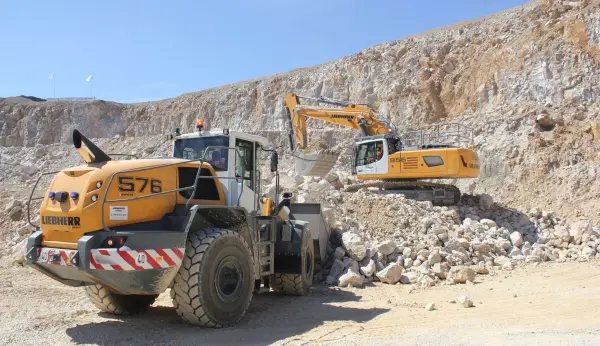Driving concrete sustainability through recycling and re-use

First published in the May 2025 issue of Quarry Management
By Steve Birch, circularity director, Tarmac
Concrete has long been the cornerstone of modern construction, over 30 billion tonnes is used annually, production of concrete is energy intensive and is responsible for more than 7% carbon dioxide emissions, of which cement accounts for the vast majority. As the industry works towards achieving net-zero-carbon goals, the focus is shifting to how we can maximize existing materials to create a circular economy. Recycling concrete is not only essential for reducing environmental impact but also demonstrates how the construction industry can lead the way in sustainable practices.

Concrete, as a durable and highly versatile material, presents a unique opportunity to close the loop on construction waste. When concrete reaches the end of its life, it does not mark the end of its usefulness. Instead, it can be recycled, repurposed, and transformed into a valuable resource for new applications, perpetuating its lifecycle.
The value of recycled concrete
Most concrete’s volume is made up of aggregates, which can be reclaimed and reused when concrete is recycled. Recycled concrete primarily finds new life as sub-base materials, fill, and hardcore, replacing the need for primary aggregates and conserving finite natural resources. For certain applications, such as armour-stone for shoreline protection, entire concrete pieces from demolished structures can also be reused with minimal processing.
For applications where higher performance is required, the use of crushed concrete aggregate (CCA) provides a viable and sustainable option. Classified under BS 8500:2023, CCA contains a high proportion of quality aggregate material, making it suitable for use in new concrete mixes and a range of other applications. With fewer restrictions compared with general recycled aggregate, CCA offers an increasingly attractive choice for projects looking to prioritize sustainability without compromising on performance.
A well-established recycling ecosystem
The UK has one of the most advanced supply chains in the world for concrete recycling. A large quantity of concrete demolition waste is now recycled, thanks to the efforts of demolition contractors, recycling centres, and industry collaboration. Demolished concrete can be crushed on site for immediate reuse in redevelopment projects, or it can be transported to local recycling facilities for further processing and distribution.
Recycled and secondary aggregates already account for around 29% of total aggregate use in the UK, according to the Mineral Products Association (MPA). This is a significant contribution to the circular economy, reducing demand for primary aggregates and lowering carbon emissions across the construction sector.
Innovating with recycled concrete
While the recycling of concrete aggregates is already well-established, new innovations are unlocking further potential. Recycled concrete fines, which consist of cement paste and sand left after the removal of aggregates, currently have limited-value applications. However, research and development in this area are paving the way for their use in carbon capture, cement replacement, and even the manufacture of new cement products.
A circular future for concrete
Recycling concrete is testament to the material’s enduring value and versatility. As new ways to reuse and repurpose concrete waste are explored, the construction industry has an unparalleled opportunity to make a meaningful contribution to the circular economy. By reducing reliance on primary aggregates, improving carbon capture, and innovating in cement replacement technologies, we can significantly reduce the environmental impact of construction.
Looking ahead, segregation at source will be critical to unlocking even greater value from recycled concrete. By ensuring that materials are carefully separated during demolition and processing, we can preserve the quality of key components, such as coarse aggregates, fine aggregates, and recycled cement. This not only maximizes the potential for high-value reuse but also allows advanced circular solutions to be developed. These technologies represent the next stage in the journey for recycled concrete, moving beyond downcycling and towards full material recovery and upcycling into new low-carbon, high-performance products, such as CEVO concrete from Tarmac.
Subscribe to Quarry Management, the monthly journal for the mineral products industry, to read articles before they appear on Agg-Net.com








